#Malevich
Text
DEADLINE FRIDAY! (Late papers may be considered but please try to submit on time.)
UAAC Session Call for Papers: Left in the Dark
Anna O'Meara, University of Victoria, [email protected]
Panel Session | Session de panel
As Martin Jay explores in Downcast Eyes, metaphors for sight broadly relate to empirical understanding. What kinds of understandings are associated with darkness or shades of black? The dark has diverse transhistorical associations, including black out protests; black holes (Anish Kapoor); race/colorism; chiaroscuro; infinity and cosmos (Malevich); protection (Hinduism); femininity (Taoism); inner light (Kabbalah); and eternal spirit (Jacques-Louis David). While various and sometimes contradictory, certain trends appear somewhat consistently, especially the presence of ontological questions in association with darkness and the shade of black. This session encourages papers that explore transnational and transhistorical themes of darkness in relation to questions of being and nothingness. We welcome sessions both within art and art history and from a variety of disciplines that employ art historical or artistic approaches. We accept both Francophone and Anglophone proposals. This is an in-person session.

15 notes
·
View notes
Text

The last futurist exhibition of paintings 0,10 at Marsovo Pole, in Petrograd, Russia, 12.1915-01.1916.
end of previous Russian art movement: Cubo-futurism.
non-objective art
#suprematism#malevich#kazimir malevich#black square#exhibition#tapeta#Russian Avant-garde#1915#russia#russian#polish#Vladimir Tatlin#Olga Rozanova#art#my uplods#my uploads
133 notes
·
View notes
Text
1st image:
Punta de Hidalgo lighthouse, by Ramiro Rodriguez-Borlado (1994).
Tenerife - Canary Islands, Spain.
© Roberto Conte (2023)
2nd image:
One of the "arkhitektons" by the Russian artist Kazimir Malevich, a series of models of avant-garde architecture produced from 1923 to the early 1930s and a way to apply to the three dimensions the principles of suprematism.
Moscow, Russia.
© Roberto Conte (2017)


8 notes
·
View notes
Text
Kazimir Malevich, Suprematist Structure Among American Skyscrapers, 1926

#art#avantgarde#architecture#constructivism#russian art#soviet art#malevich#modernism#design#collage#suprematism#kazimirmalevich
33 notes
·
View notes
Text

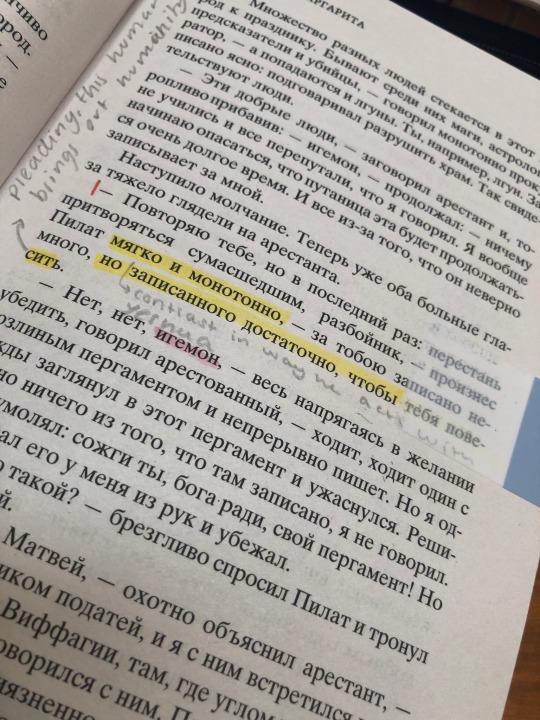

Not been the most productive week but! We move!
To do:
Write Script for coursework
Master and Margarita Readings
Grammar drills
Should be a nice, manageable day!
#studyblr#russian#langblr#languages#slavic languages#university#uni#history#cambridge#soviet art#malevich#goncharova
28 notes
·
View notes
Text

🍋🍋🍋
4 notes
·
View notes
Text
russia cannot reach a single achievement without Ukraine, and it's proud the most of people who were Ukrainian origin but were russified.
#gogol#malevich#vladimir mayakovsky#tchaikovsky#korolyov#who else#oster#half of 'russian' classical artists
11 notes
·
View notes
Text
Why would Kazimir Malevich shift away from Suprematism after the 1920’s?
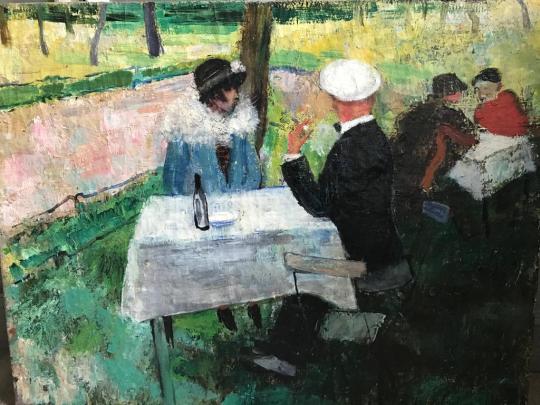
Kazimir Malevich On the Boulevard, canvas, oil. 60.5 x 78, 1929 – 1930
Kazimir Malevich’s evolving relationship with Suprematism in the post-1920s era was influenced by a variety of factors, reflecting a complex interplay of political, personal, and philosophical dynamics.
Politically, the ascent of Joseph Stalin’s regime in Soviet Russia marked a significant shift in cultural policies, favoring Socialist Realism as the sanctioned artistic style. Suprematism’s abstract, non-representational approach clashed with the regime’s preference for art that served propagandistic purposes and depicted idealized Soviet themes. Consequently, Malevich encountered mounting challenges in showcasing and disseminating his Suprematist works within the state-controlled artistic milieu.
However, Malevich’s relationship with Suprematism was not solely defined by external pressures. Internally, he experienced a gradual evolution of his artistic vision and philosophical outlook. While Suprematism had been groundbreaking in its time, Malevich may have felt constrained by its formal constraints and sought new avenues for creative expression. His later works reflected a deeper engagement with spiritual and metaphysical themes, indicating a transition towards a more introspective and contemplative artistic practice.
Moreover, practical considerations likely influenced Malevich’s approach. With Suprematism marginalized within the Soviet art world, Malevich may have pragmatically adapted his artistic output to align with prevailing trends and market demands, ensuring his continued relevance as an artist.
“On the Boulevard” by Kazimir Malevich from the late 1920s to early 1930s, places it squarely within the period when Malevich was shifting away from Suprematism. This painting further exemplifies his departure from the movement.
In “On the Boulevard,” Malevich continues to depart from the strict geometric abstraction of Suprematism, instead incorporating elements of the urban landscape in a more recognizable manner. The use of color and form in this painting suggests a transition towards a more varied and representational style.
By depicting scenes from everyday life, such as people walking along a boulevard, Malevich moves away from the purely abstract concerns of Suprematism and towards a more figurative and narrative-driven approach. This departure from his earlier style reflects his evolving artistic interests and his willingness to explore new avenues of expression.
Overall, “On the Boulevard” serves as another example of Malevich’s shift away from Suprematism during the late 1920s and early 1930s, as he embraced a more diverse and representational approach to painting.
#suprematism#russian artists#avant garde#kazimir malevich#malevich#ifoundmalevich#avantegarde#russianavantgarde#avantagarde#russianavantegarde#avantrgarde#avantgardeart#Malevich#artauction#inonica artnewyork#artlondon#russianart#malévich
6 notes
·
View notes
Text

The Malevich Tectonic of Zaha, Oswald & Daniel
8 notes
·
View notes
Text
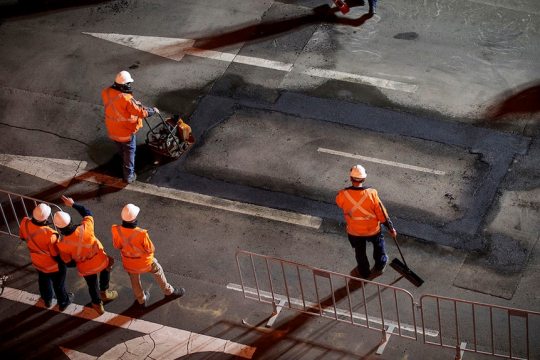
Underneath the Bitumen the Artist - Mike Parr
"This work was conceived to memorialise the victims of twentieth century totalitarian violence in all of its ideological forms, including the shadow cast by the genocidal violence of nineteenth century British colonialism in Australia.
"The public will be able to witness the artist’s ‘disappearance’ under the road, but following the entombment, the road will be returned to familiar use.
"When the artist exits the container at the conclusion of the performance, concrete will be poured to fuse the chamber and its contents as a time capsule instated for future generations."
(source)
"Mr. Parr’s said his vanishing act was designed to tap into our deepest anxieties. Inspired by Kazimir Malevich’s painting 'Black Square,' the performance, Mr. Parr said, was about 'the null of the image.'"
(source)
#art#performance art#null#anti-monument#hidden#buried#three days#death#resurrection#malevich#black square#disappearance#entombment
3 notes
·
View notes
Photo
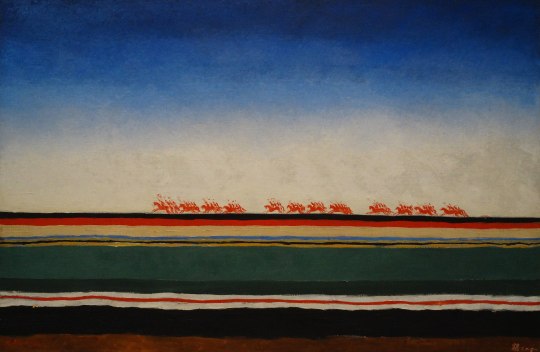
Kazimir Malevich (Russian, 1878 -1935)
Red Cavalry Riding, 1928- 1932
State Russian Museum
img source: Paintings in the Russian Museum
34 notes
·
View notes
Photo
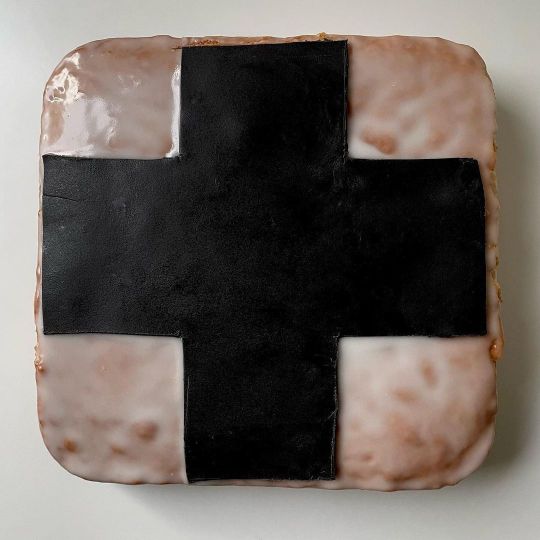
From • @katharina_verena Sundays are for cakes 🍋➕ #laibakery #artinthebaking #laibach #laibachofficial #art #artwork #kunst #umetnost #neueslowenischekunst #irwin #blackcross #malevich #maléwich #malewitsch #kazimirmalevich #kazimirmalévich https://www.instagram.com/p/CoiEDbssuMdeVcm-e4mDqhoIdYkGG-0BKTyS780/?igshid=NGJjMDIxMWI=
#laibakery#artinthebaking#laibach#laibachofficial#art#artwork#kunst#umetnost#neueslowenischekunst#irwin#blackcross#malevich#maléwich#malewitsch#kazimirmalevich#kazimirmalévich
7 notes
·
View notes
Text
Lazar Khidekel, Series of Tonal Vertical Architecton, 1927
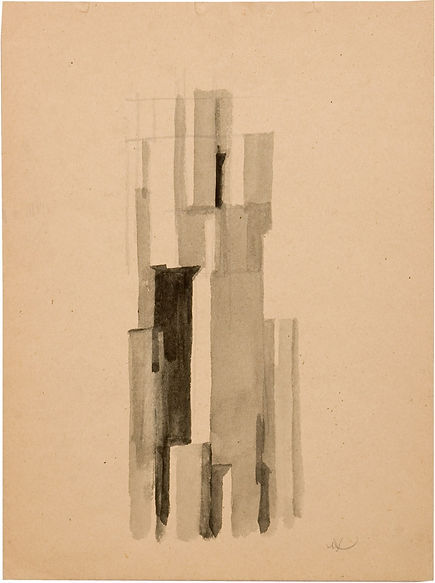

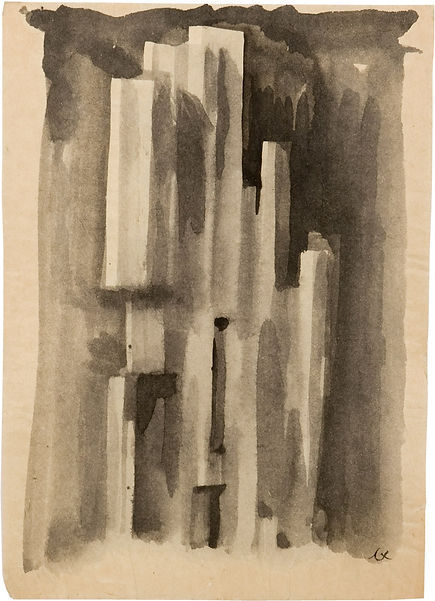
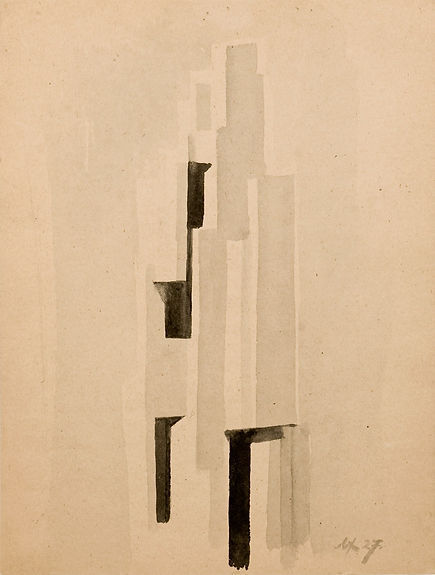
#art#avantgarde#architecture#design#constructivism#russian art#modernism#lazar khidekel#malevich#soviet art#watercolor
19 notes
·
View notes
Photo

Kazimir Malevich - Black Square (ca.1923)
20 notes
·
View notes
Text
O efeito de El Lissitzky
Minha relação com a série Proun
Escrito em 14/04/2023
O artista constrói um novo mundo com seu pincel. Este símbolo não é uma forma reconhecível de algo que já está acabado, já feito, já existente no mundo – é um símbolo do novo mundo, que está sendo construído e que existe por meio das pessoas.
El Lissitzky
Não há outro jeito de começar esse blog senão com o meu artista preferido: El Lissitzky. Objeto de minha admiração constante no meu tumblr oficial , o universo criado em seus quadros é o que me faz querer seguir no caminho da arte, e reproduzir aquela sensação é o meu objetivo final na arquitetura.
Desde que entrei em contato com sua obra eu não consigo separar meu entendimento do que é arte da minha experiência com a série Proun. O universo geométrico criado nos quadros, mesmo com as limitações da tela e com a simplicidade das figuras, obriga o expectador a expandi-lo na mente e mesmo ao desviar a vista suas formas acompanham a realidade.

Proun 4 B, 1920
Os quadros feitos nos anos de 1919 a 1927, culminando no Prounenraum (Quarto Proun) de 1923 são distintos do movimento suprematista o qual Lissitzky fazia parte: o efeito espacial já presente na obra de Malevich tem seu efeito aprofundado pela tridimensionalidade. A atemporalidade da série é facilitada por não parecem com nada feito em seu período, sem contar com a técnica, cujo o fato de ter sido feitas manualmente surpreende em nossa época de arte digital.
Suas obras tem o efeito de fetiche sobre o espectador de todas as épocas: o modo de sua produção, seu contexto e autor são pouco relevantes para sua admiração. Creio que esse conceito seja ainda mais valioso do que nunca na contemporaneidade.
Por fim, El Lissitzky me fascina pela capacidade que teve de trabalhar suas ideias em diversas escalas, desde a mais experimental esquematização/pintura da Proun aos seus famosos cartazes de AGITPROP (“Vença os Brancos com a Cunha Vermelha” é sem dúvidas sua obra mais conhecida). Sua obra se estende por vários campos e sua influência em seu período é subestimada até hoje, espero que com esse blog possa dar mais luz a esse grande artista.
#russian avant garde#lazar khidekel#constructivism#malevich#arte#crítica#blogger#art#escritos#el lissitzky
2 notes
·
View notes
Text

Victory over the sun. Opera A. Kruchenykh, music by M. Matyushina, scenery by K. Malevich. St. Petersburg: Type. "Light," 1913. It's a rarity.
2, 24 p., sheet music 25.5 x 17.5 cm. In the publishing, illustrated with a sketch of the scenery by K. Malevich, cover (autotype). Loss of the back cover, the cover is restored. The publication was published without a title page.
On p. 1-2 "Prologue. Chernotvorsky Vestuchki" V. Khlebnikova. The book came out in two forms: on thin paper with a cover of thin gray paper and on thick gray paper with a cover of pink tone.
Polyakov No. 46, Rozanov No. 3118
Pioner and Co.
5 notes
·
View notes